VARIEGATED MEADOWHAWK
Sympetrum corruptum
|
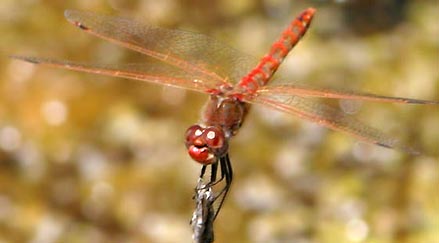 |
Variegated Meadowhawk is a very colorful
meadowhawk with behaviors typical for the
group: it sits on perches near or over water, dashes out after prey or
females, and often returns to the same perch.
|

photo (above) 23
July 2006 Salinas
|
| Adult males have a variegated pattern on
the abdomen, dominated by the black-rimmed white series of spots.
Adults males have a cherry-red face. A view from above (photo above)
shows the intricately patterned abdomen, ending with two dark blue
spots and then yellow terminal appendages.
n the shot (below) the male is chewing on a
bit of prey. Note also the pterostigma (colored small spots on the
leading edge of the outer wing) that are colored in the center but pale
at each end.
|
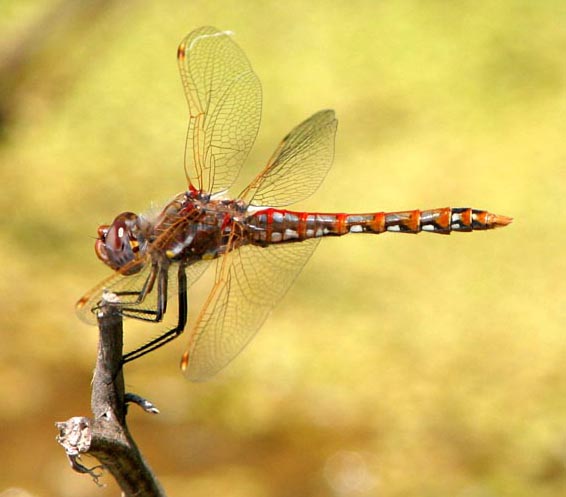 |
|
photo (above
& below) 23 July 2006 Salinas
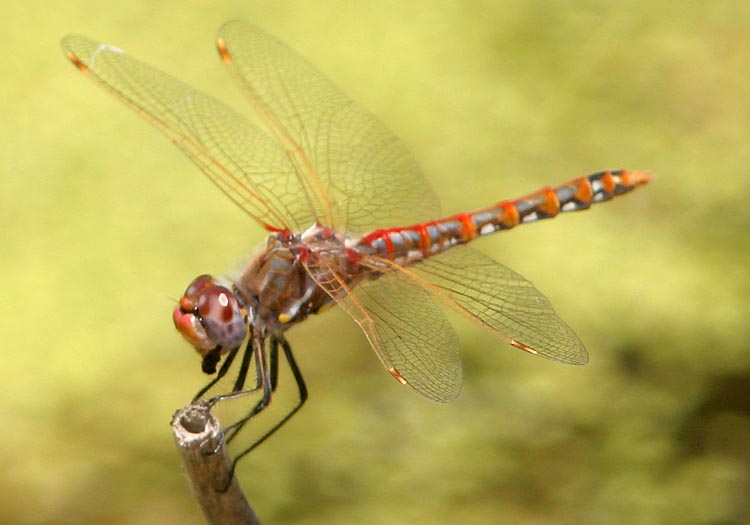
|
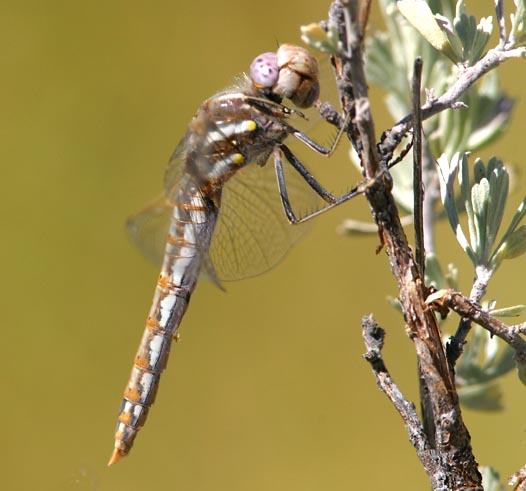 |
Adult females (left) have a similar pattern
but less bright, with grays and oranges replacing the richer reds of
the male. Both male and female have a characteristic thoracic pattern
of two white stripes that end in a yellow dot.
Photo (left) 15 Aug 2006
Heenan Lake, Alpine Co.
|
|
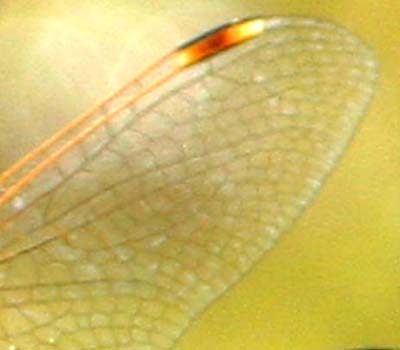 A close-up view of
the upper right wing shows the double row of cells between the radial
sector and the radial planate (illustrated above by blue outlines),
which separates this species from Striped Meadowhawk S. pallipes
and Cardinal Meadowhawk S. illotum, both of which are also
widespread in Monterey County. A close-up view of
the upper right wing shows the double row of cells between the radial
sector and the radial planate (illustrated above by blue outlines),
which separates this species from Striped Meadowhawk S. pallipes
and Cardinal Meadowhawk S. illotum, both of which are also
widespread in Monterey County.

|
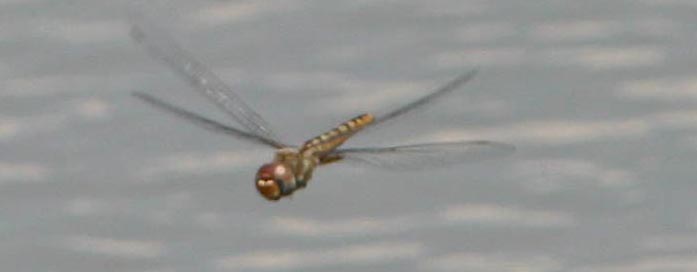
|
| In the flight shot (above), a younger male
patrols a territory over a small pond. Its colors have not yet
brightened up. In MTY, this species seems to prefer open country:
wastewater treatment ponds, expanses of shallow, reedy ponds in open
agricultural land, or coastal marshes. Wandering individuals, though,
may turn up in backyards (for example, Marina; Steve Rovell) or the
outer coast (e.g., Rocky Shores, Pacific Grove, 8 Oct 2006; Rita
Carratello). Presumably the species is widespread in Monterey County,
and wanderers could turn up anywhere.
This is a common and widespread species throughout
the United States and s. Canada, and it undertakes migrations annually.
Early emergers from Mexico or the southern U.S. fly north to breed, and
then another set of late emergers in the north fly south again in
autumn to breed as a second generation. Because of these movements,
'fall-outs' are sometimes encountered (Manolis 2003).
I like the shot below because it almost looks like
the meadowhawk itself is encased in the same spider webs that cover the
weed stem on which it perches . . .
Photo (above) 23
July 2006 near Salinas
Photo (below) 24 Sep 2006 Carmel
River mouth
|
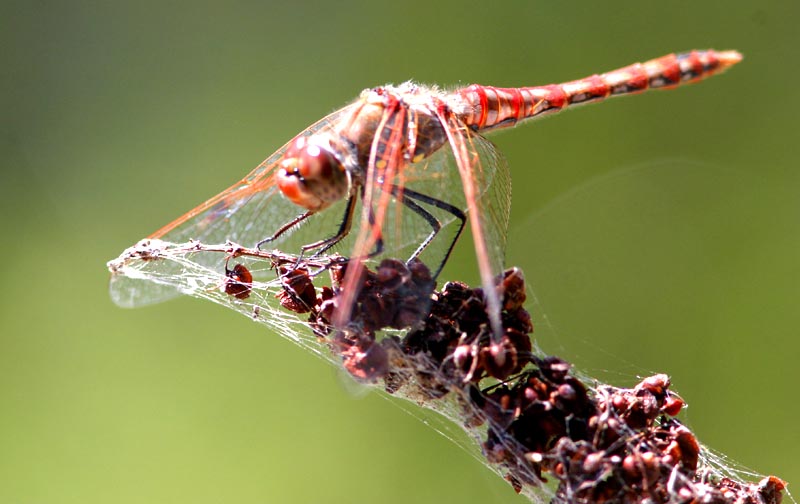
|
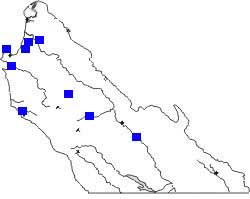 The map shows a
selection of sites at which Variegated Meadowhawk has been observed. It
is likely widespread throughout the county in open country. The map shows a
selection of sites at which Variegated Meadowhawk has been observed. It
is likely widespread throughout the county in open country.
This is a species that flies almost
year-round. In MTY there are two January records [22 Jan 2003 Ft. Ord
(R.J. Adams) & 26 Jan 1938 Hastings Nat. Hist. Resv. (#HNHR)].
These might be considered "late" dates — perhaps at the end of the
previous years' flight season — because the next date is not until May
(4 May 1941; #HNHR). After May there are consistent records into early
November [6 Nov 1938 #HNHR]. Elsewhere in California flight dates span
all months, with peaks in spring and fall (Manolis 2003).
|
|
Literature cited:
-
Manolis, T. 2003. Dragonflies and Damselflies of California. Univ. of
Calif.
Press, Berkeley.
Web resources:
Major identification web sites with much information on California
odes include:
For sites with excellent photos to compare for identification or to
simply
enjoy, see:
Many of these sites have links to other useful pages. Kathy Biggs's
site
is particularly useful in her selection of links. |
